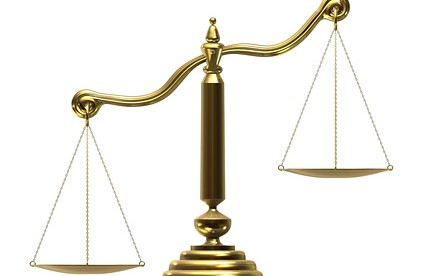The Two Coins

Hi!
It’s Friday and Monday is Columbus Day. Typically, I take Columbus Day off and run a Weekender before the long weekend. But this year kind of screwed me up, because I just took off for Rosh Hashanah last week and I’m taking off for Yom Kippur next week. That’s too much time off clumped together, but the time off helps me keep the content fresh. Not sure what to do, I decided to try something completely different.
A brain teaser. Or puzzle.
Two, in fact.
The first one I’m going to give you the answer to today. The second one I’ll give you the answer to on Monday. If you like the format (and the curveball), I’ll throw some more stuff like this out there on occasion. If you don’t, I won’t. Either way, let me know. Just hit reply.
Anyway, onto the puzzles.

Part 1: The Heavier Coin
You have a balance (like the one above) and twelve coins, one of which is heavier than the rest, but you don’t know which one it is. Using just 3 weighings on the balance, can you identify which coin is the odd one out?
The answer to this one is below. If you think it’s easy, you’re right — it is.
* * *
Before we get to the solution, though, here’s some things I’d like to share.
* I considered sharing an old Now I Know today. It was going to be this one, about how Christopher Columbus used an eclipse to convince naive Jamaicans that he could make the moon disappear.
* The New York Post cited me (and a recent Now I Know) as a source for baseball trivia. That’s pretty neat. Here’s their article.
* If you are looking for a new podcast, Radiolab’s “More Perfect” is excellent. It’s about the Supreme Court with an arcane bent, so I’m biased toward liking it — I’m a former (“recovering”) lawyer and know a good amount of arcane stuff, as you can imagine. Check it out, here. (The one titled “The Political Thicket” is particularly good and they could have easily spent another few hours on the topic.)
* If you’re supporting Now I Know on Patreon, thanks! If you’re not, here’s a commercial interruption — then, mercifully, we can get the answer to the puzzle. Deal? Good.
Now I Know is supported by readers like you. Please consider becoming a patron by supporting the project on Patreon. Click here to pledge your support.
Great! Thanks for your support. Now, let’s answer “The Heavier Coin.” It’s pretty easy and there are a lot of ways to solve it. I’m going to pick one approach — probably the most straight-forward one.
Step 1: Put four coins on either side of the balance, reserving four others. If the balance stays even, you know that the heavier coin is among the four reserved. If the balance tips, you know that the heavier coin is on the side that went down. Either way, you now have isolated the heavier coin within a subset of four.
Step 2: Put two coins of the four identified in Step 1 on either side of the balance, reserving none. Whichever side goes down has the heavier coin.
Step 3: You have two coins left and can use the scale once more. That’s a great situation to be in! Put one coin on either side and whichever sides drops contains the heavier coin. You win.
Pretty simple, right? The trick is to realize that if the balance stays level, you’ve still gained key information.
Now, let’s make it harder
Part 2: The Different Coin
You have a balance and twelve coins, one of which weighs a different amount than the rest, but you don’t know which one it is — and you don’t know if the different coin is heavier or lighter than the rest. Using just 3 weighings on the balance, can you identify which coin is the odd one out (and whether it’s heavier or lighter)?
It’s a simple, minor change, right? Shouldn’t be any more difficult? Well, try it out. It’s much harder. Use the three steps I outlined above and you’ll see how quickly that plan falls apart.
I learned this puzzle in high school — my math teacher gave it to us and I spent the rest of the day working out the solution. A few years later, I asked a group of friends the question, and a half-dozen or so eventually worked it out, but it was a team effort and took a good amount of time, perhaps 45 minutes or an hour (or more). So be prepared to invest some time if you want to solve this one. Either way, I’ll be back with the solution on Monday.
Have a great weekend!
WeekenderAdUnits

